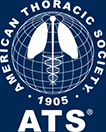Since 2014, CBQ has been reviewing the new ICD-10-CM codes for many pulmonary diseases. To review these articles access CBQ on the ATS website at www.thoracic.org/about/newsroom/newsletters/coding-and-billing/.
This article continues the series with ICD-10-CM coding for the idiopathic interstitial lung diseases (ICD 9-CM: 515-516.9; ICD-10-CM: J84-J84.9) and systemic diseases with lung involvement (ICD-9-CM: 135, 517.8 and 710-710.9; ICD-10-CM: D86.1-D86.3, M05.10-M05.19; M32.10-M35.02 and J99). The ICD-9 and ICD-10-CM coding for the idiopathic interstitial lung diseases was revised shortly before the last update on ICD-9-CM which occurred October 1, 2011. As a result there have been few changes in the code descriptors for the idiopathic interstitial lung diseases in ICD-10-CM.
ICD-9-CM code 515 for post inflammatory pulmonary fibrosis will be replaced by two codes, pulmonary fibrosis, unspecified, J84.10, or other specified interstitial pulmonary disease, J84.89 (Table One). The first code should be used if there is no known cause or disease associated with the pulmonary fibrosis, and the second code if there seems to be a cause or disease associated with the pulmonary fibrosis which is not captured by another pulmonary ICD-10-CM code.
There have been a few changes in the coding structure for several of the idiopathic interstitial lung diseases. Lymphoid interstitial pneumonia, J84.2, has been removed from the list of idiopathic interstitial pneumonias, J84.11, and placed under other pulmonary diseases with fibrosis, J84.1. Similarly surfactant mutations of the lung, J84.83, has been moved from under other interstitial lung diseases of childhood, J84.84, and placed under other specified interstitial pulmonary diseases, J84.8 (Table One). Chest x-ray or chest CT findings, pulmonary function test results and lung biopsy results should be described in the patient’s record to document the presence of the idiopathic interstitial lung diseases.
Lung involvement can occur with sarcoidosis and other systemic diseases. Usually two ICD-9-CM codes are required to code for the systemic disease and the lung involvement. To code for pulmonary involvement in sarcoidosis for example, ICD-9-CM code 135, sarcoidosis, is used along with 517.8, lung involvement in other diseases classified elsewhere. For sarcoidosis in ICD-10-CM, D86.0 is the code for sarcoidosis of the lung and D86.2 is the code for sarcoidosis of the lung and lymph nodes (Table Two). D86.1 should be used for sarcoidosis of the lymph nodes seen in stage I sarcoidosis. It will be important for documentation using ICD-10-CM to describe the chest x-ray or chest CT findings along with pulmonary function studies in the patient’s record as well as pathologic findings supporting sarcoidosis. For ICD-10-CM, lung involvement in systemic diseases will require only one code (Table Two) Rheumatoid lung disease was identified by only one code in ICD-9-CM, 714.81, and, in ICD-10-CM, becomes M05.10, rheumatoid lung disease with rheumatoid arthritis of an unspecified site, or M05.19, rheumatoid lung disease with rheumatoid arthritis of multiple sites (Table Two). Rheumatoid lung disease codes for monoarticular rheumatoid arthritis (M05.12-M05.17) should be used when only monoarticular rheumatoid arthitis is present. Documentation for lung involvement in rheumatoid arthritis and other systemic diseases will require describing the chest x-ray or chest CT findings, pulmonary functions studies and any lung pathology results in the patient’s record.


